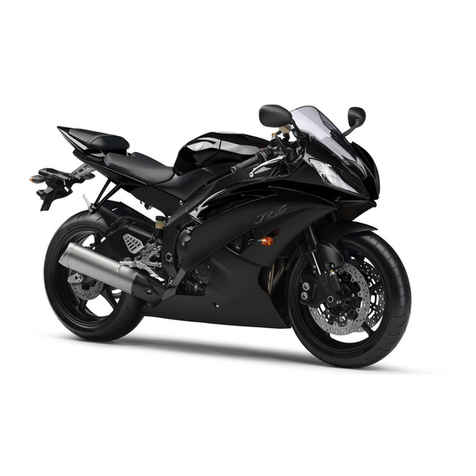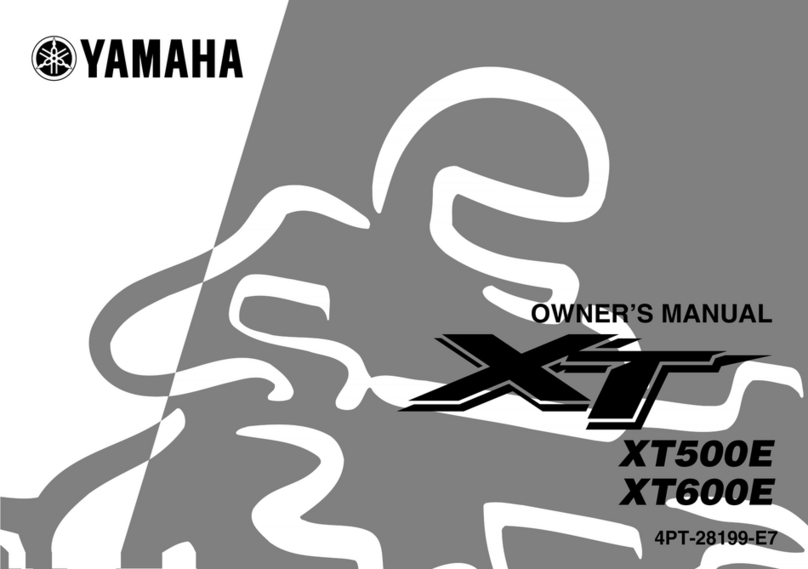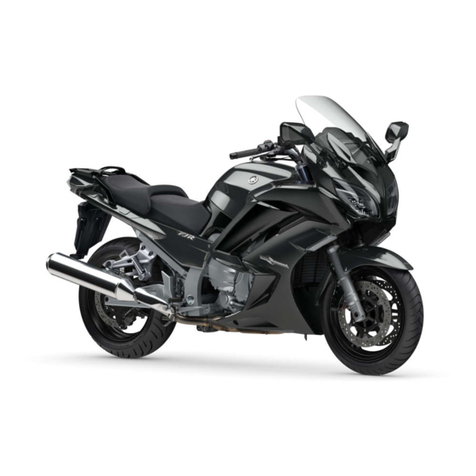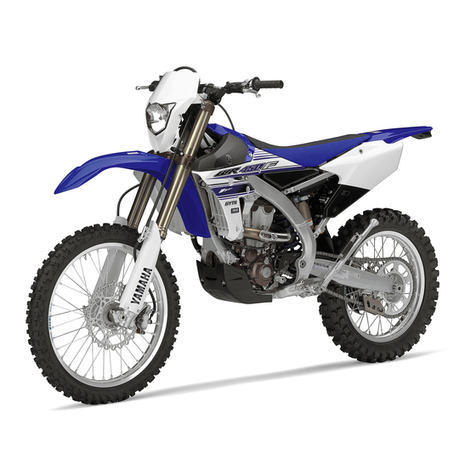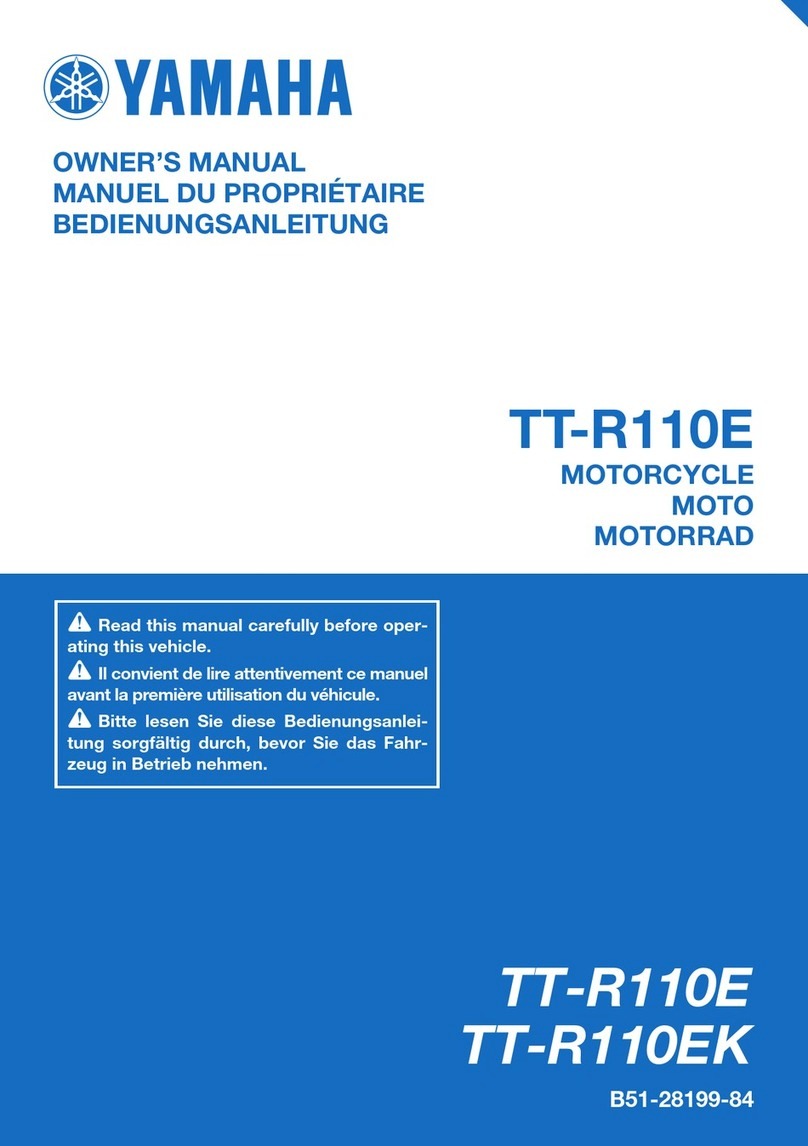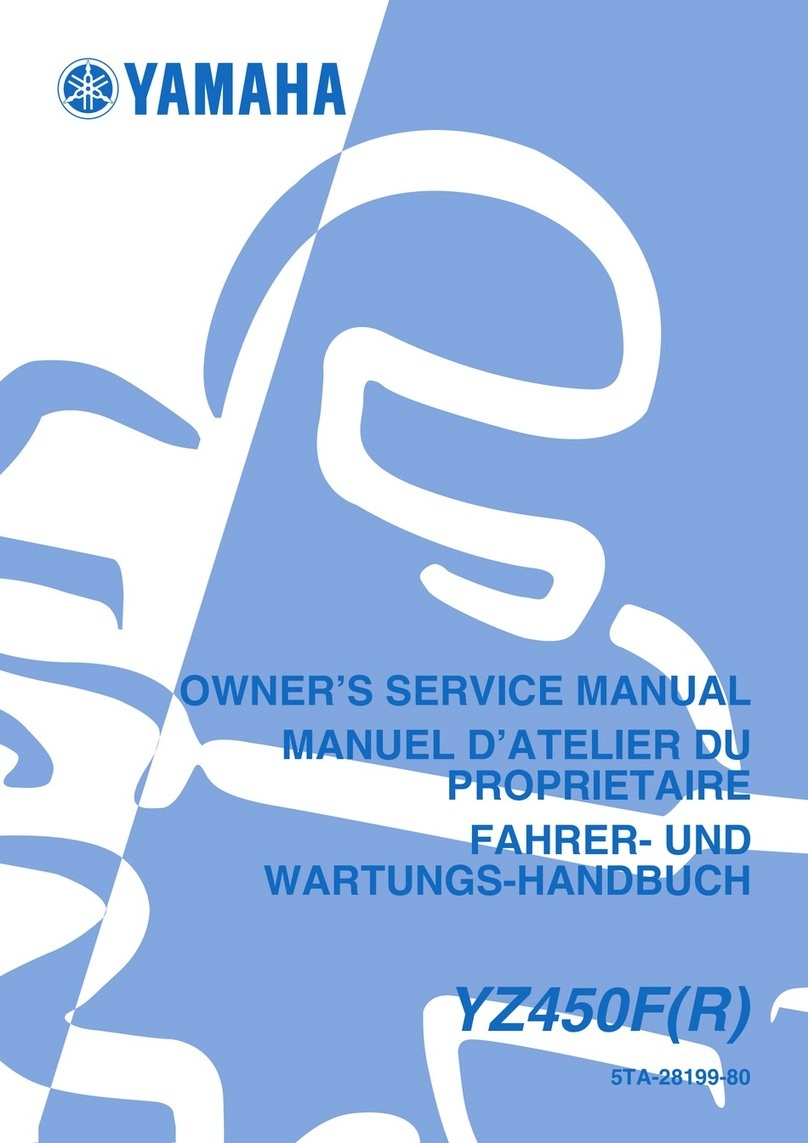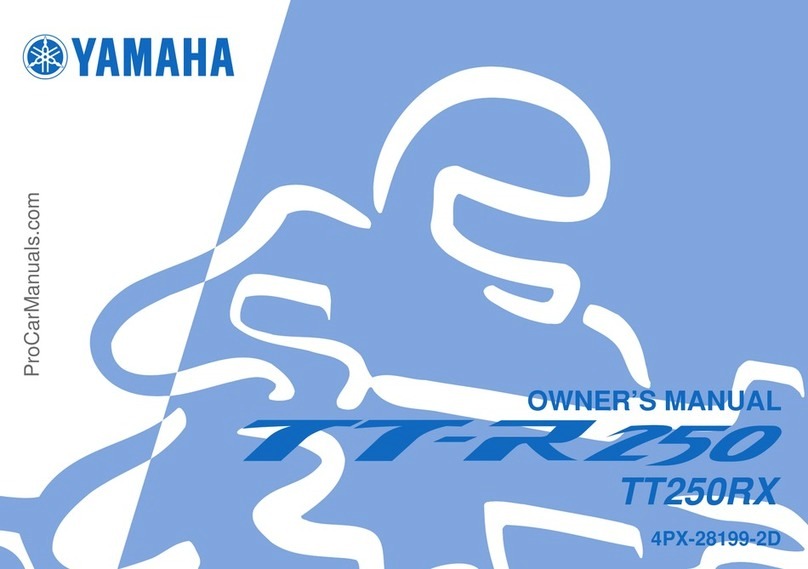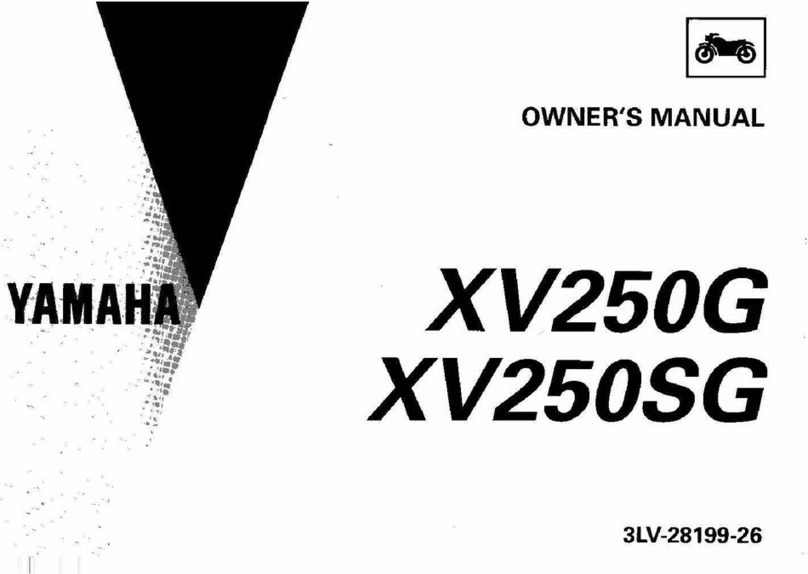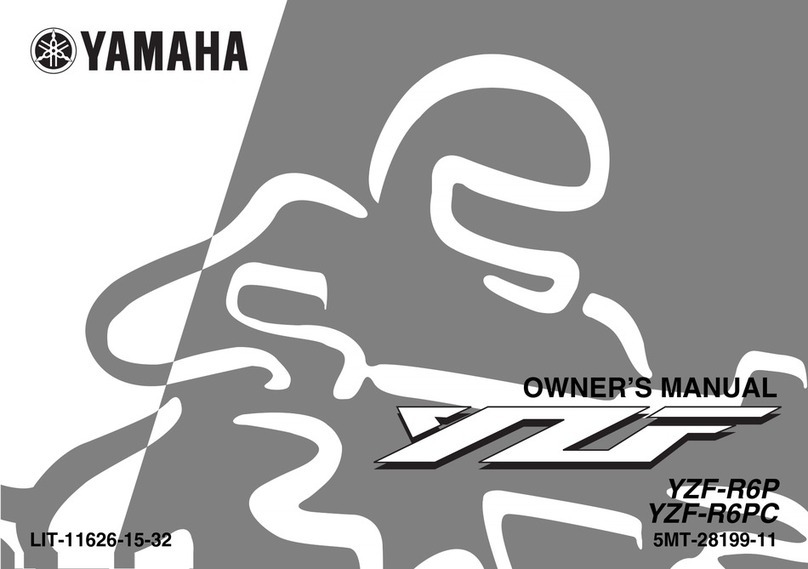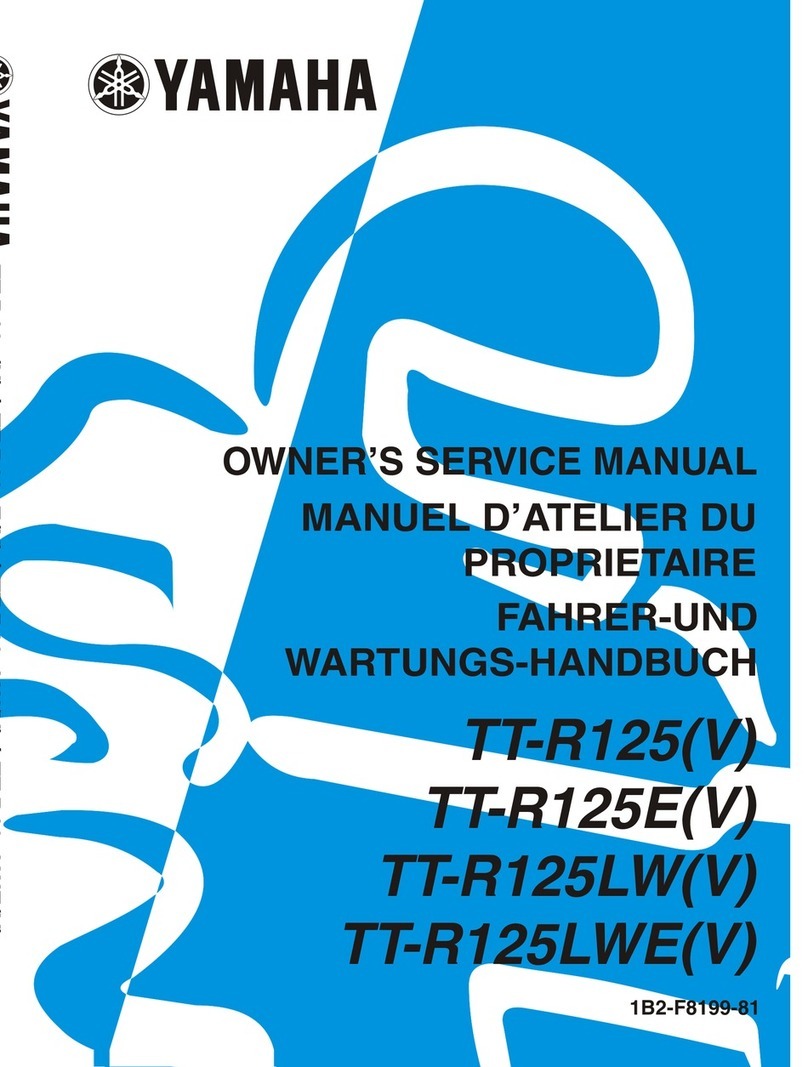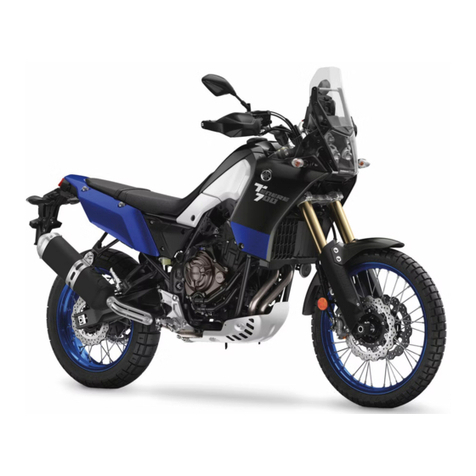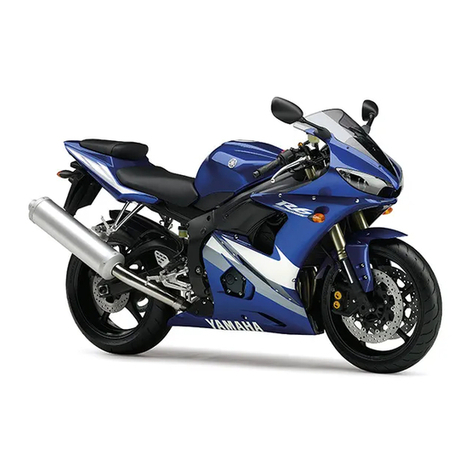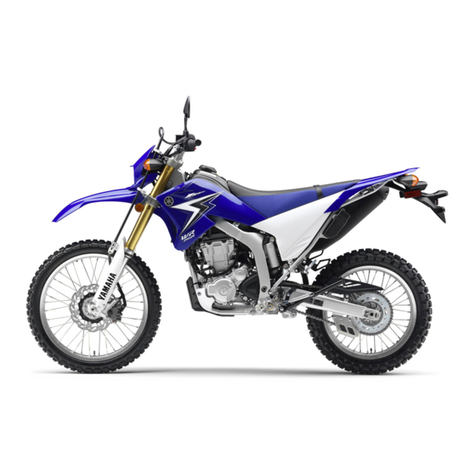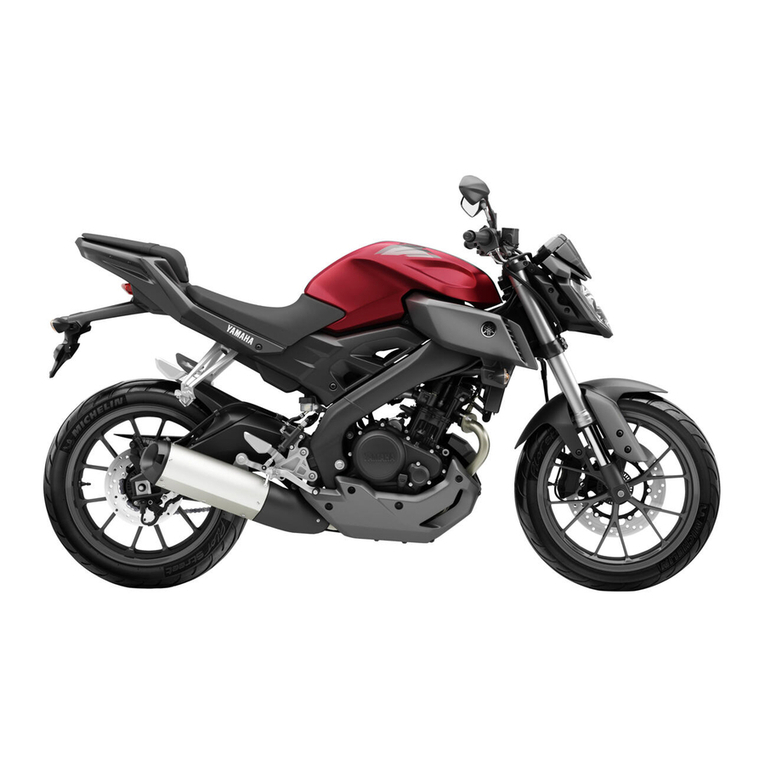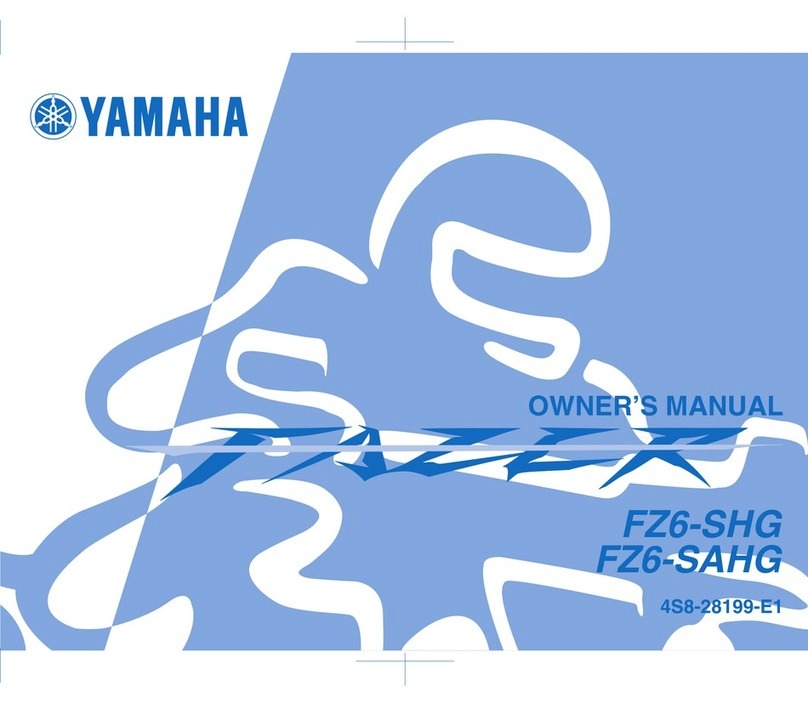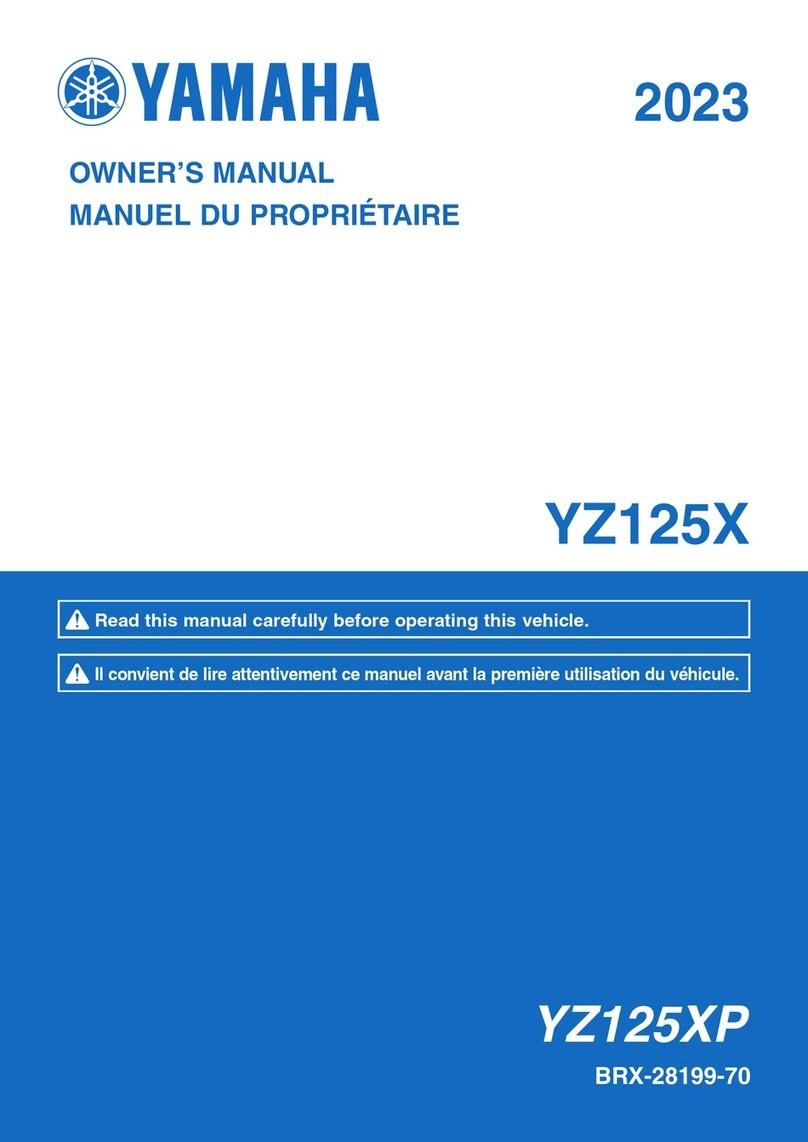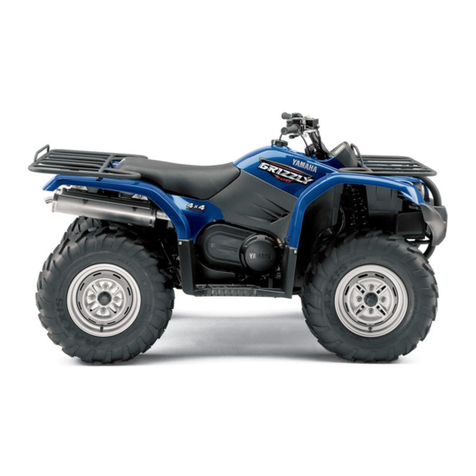
TABLE OF CONTENTS
LOCATION OF IMPORTANT
LABELS ............................................. 1-1
SAFETY INFORMATION .................. 2-1
DESCRIPTION .................................. 3-1
Left view .......................................... 3-1
Right view ........................................ 3-2
Controls and instruments................. 3-3
INSTRUMENT AND CONTROL
FUNCTIONS ....................................... 4-1
Main switch ..................................... 4-1
Indicator lights ................................ 4-1
Speedometer unit ........................... 4-2
Handlebar switches ........................ 4-2
Clutch lever ..................................... 4-3
Shift pedal ....................................... 4-3
Brake lever ..................................... 4-3
Brake pedal .................................... 4-4
Fuel tank cap .................................. 4-4
Fuel ................................................. 4-4
2-stroke engine oil .......................... 4-5
Fuel cock ........................................ 4-6
Starter (choke) knob ....................... 4-7
Kickstarter ....................................... 4-8
Seat ................................................ 4-8
Adjusting the shock absorber
assemblies .................................. 4-9
Front and rear carriers .................... 4-9
Sidestands .................................... 4-10
FOR YOUR SAFETY –
PRE-OPERATION CHECKS ............. 5-1
OPERATION AND IMPORTANT
RIDING POINTS................................. 6-1
Starting and warming up a cold
engine ......................................... 6-1
Starting a warm engine .................. 6-2
Shifting ........................................... 6-2
Tips for reducing fuel
consumption ............................... 6-3
Engine break-in .............................. 6-3
Parking ........................................... 6-4
PERIODIC MAINTENANCE AND
ADJUSTMENT ................................... 7-1
Owner’s tool kit ............................... 7-2
Periodic maintenance chart for
the emission control system ....... 7-3
General maintenance and
lubrication chart .......................... 7-4
Removing and installing panels ..... 7-7
Checking the spark plug ................. 7-8
Transmission oil ............................. 7-9
Cleaning the air filter element ...... 7-10
Adjusting the carburetor ............... 7-11
Adjusting the engine idling
speed ........................................ 7-12
Adjusting the throttle grip free
play ........................................... 7-12
Tires ............................................. 7-13
Spoke wheels ............................... 7-15
Adjusting the clutch lever free
play ............................................ 7-15
Adjusting the brake lever free
play ............................................ 7-16
Adjusting the brake pedal free
play ............................................ 7-17
Checking the shift pedal ............... 7-17
Brake light switches ...................... 7-18
Checking the front and rear
brake shoes ............................... 7-18
Drive chain slack ........................... 7-19
Cleaning and lubricating the
drive chain ................................. 7-20
Checking and lubricating the
cables ........................................ 7-21
Checking and lubricating the
throttle grip and cable ................ 7-21
Adjusting the Autolube pump ........ 7-22
Checking and lubricating the
brake and clutch levers ............. 7-22
Checking and lubricating the
brake pedal ................................ 7-23
Checking and lubricating the
sidestands ................................. 7-23
Checking the front fork .................. 7-23
Checking the steering ................... 7-24
Checking the wheel bearings ........ 7-24
Battery .......................................... 7-25
Replacing the fuse ........................ 7-26
Replacing the headlight bulb ........ 7-27
3HA-9-25.book 1 ページ 2010年11月10日 水曜日 午前9時48分
